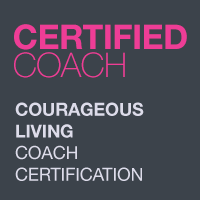“Trying to run away is never the answer to being a fully human. Running away from the immediacy of our experience is like preferring death to life.”
― Pema Chödrön, When Things Fall Apart: Heart Advice for Difficult Times
The emotion I was feeling this weekend was shame.
I sent an old friend a novella-length text that went on and on about our perceived mutual awkwardness during a meeting the previous night. An apology was thrown in there too for good measure. His answer: “Huh? What are you talking about?”
Embarrassment and its sister, shame, washed all over me. My usual response: distraction (I dove back into the book I was reading and spent a happy hour or so on Instagram) and unnecessary spending (I went to Uniqlo and got two pairs of trousers, despite my commitment to Project 333).
But on Sunday night, I sat down with my journal and wrote about the experience and more importantly, how I felt. While writing, I relived the moment of receiving the text again and I allowed the shame to wash over me, to feel the heat of embarrassment travel through my body, to feel my cheeks get red and the back of my neck get uncomfortably warm.
Our default doesn’t always have to be happiness or joy or comfort. We are human beings with a whole range of human emotions. I invite you this week to lean into your emotion—to feel the anger, the sadness, the embarrassment, the shame—instead of running away or distracting yourself. When we block our sadness, anger, fear or any other emotion that makes us feel uncomfortable, we also impede the flow of joy, gladness, hope into our lives.
“We cannot selectively numb emotions, when we numb the painful emotions, we also numb the positive emotions.”
― Brené Brown, The Gifts of Imperfection: Let Go of Who You Think You’re Supposed to Be and Embrace Who You Are
You can lean into the emotion by doing the following:
1. Pausing and acknowledging the emotion. Find a quiet place and notice, “I am angry.” “I am sad.” “I am scared.” Let yourself feel whatever comes up when you say those words. At the end, take deep breaths and send yourself some loving feels.
2. Journaling. Take some time to write about your experience and just dump it on the page. Again, allow yourself to feel the emotions that arise as you write.
3. Talk about it with a friend. Be sincere. No need to laugh about it or make the experience bigger or smaller than it is. Use words like, “I feel sad after this happened.”








